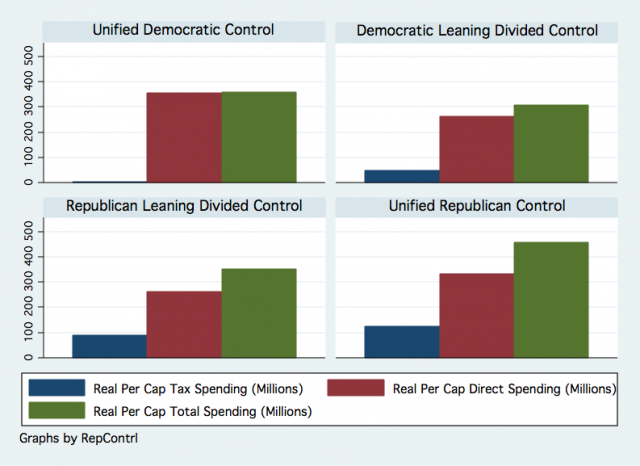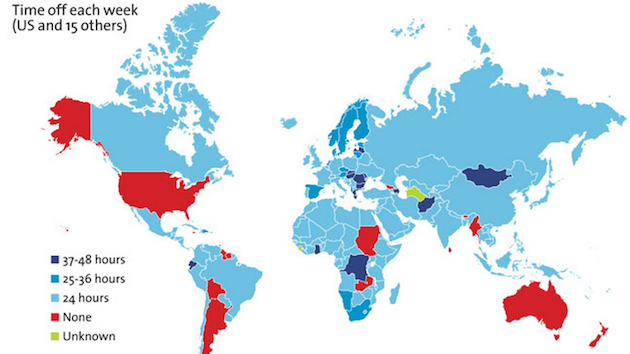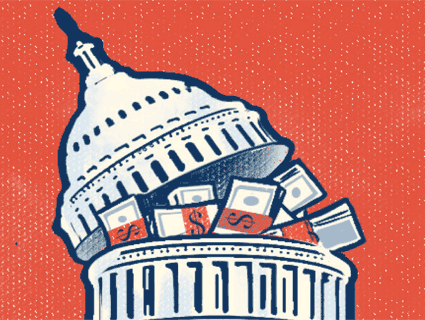The federal government can spend money on social programs two ways: directly, via ordinary tax-funded programs (Medicare, food stamps, etc.) or indirectly, via tax expenditures (tax deductions for charitable contributions, employer health insurance, etc.). Christopher Faricy, a political science professor at Washington State, recently examined both types of spending over the past 40 years and concluded that the big spenders aren’t who you think they are:
The traditional narrative of Democratic party control of the federal government resulting in higher levels of social spending needs to be reconsidered….Social spending over the last 40 years grows on average around 5% a year regardless of which political party is sitting in the majority.
….An increase in indirect social spending has the same budgetary effect as direct social spending. For example, an increase in tax expenditures for private health care insurance that costs the Treasury $100 million dollars has the exact same effect on the budget deficit as a newly proposed public health insurance option that is projected at $100 million dollars….One major implication of these findings is that the jurisdiction of social provision, not the financial effort, shifts with changes to political party control of government.
Republicans, it turns out, actually spend a bit more money on social programs than Democrats, as the green bars in the chart below show (click for a larger image). The main difference? Democrats spend it on direct programs that largely serve “the elderly, the disabled, the unemployed, and the poor…ethnic minorities, racial minorities, and single mothers.” Republicans spend it indirectly on programs that “are biased towards workers who are White, full-time, in large companies, and high-wage earners.” But spend it they do.



















